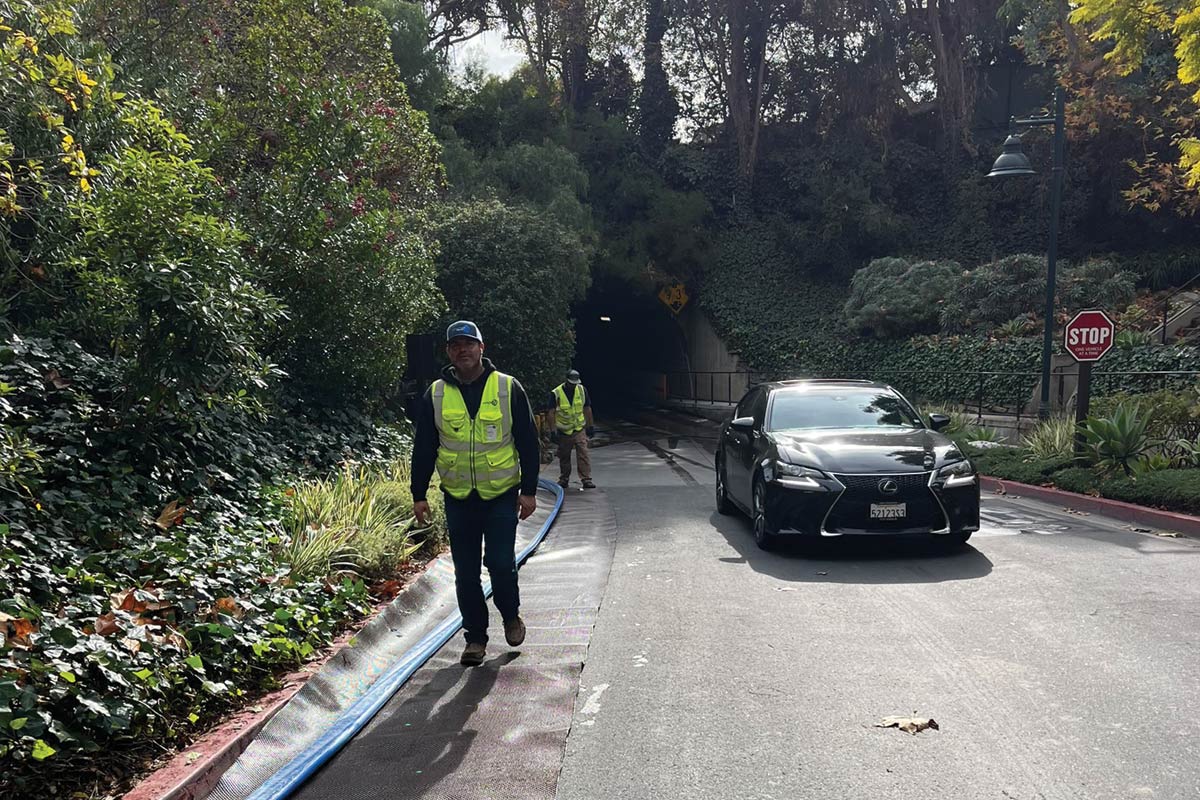
2024 Trenchless Technology Project of the Year New Installation Honorable Mention – James River Crossing Sewage Force Main HDD

The James River Crossing project is part of the Hampton Roads Sanitation District’s (HRSD) SWIFT (Sustainable Water Initiative for Tomorrow) program to convey wastewater from Newport News to Suffolk, Virginia, across the James River.
SWIFT is an innovative water treatment and conveyance program in southeastern Virginia designed to further protect the region’s environment, enhance the sustainability of the region’s long-term groundwater supply and help address environmental pressures such as Chesapeake Bay restoration, sea level rise and saltwater intrusion.
SWIFT takes highly treated water that would otherwise be discharged into rivers and puts it through additional advanced water treatment to meet drinking water quality standards. SWIFT water is then added to the Potomac Aquifer through deep injection wells, which is the primary source of groundwater throughout eastern Virginia.
The total crossing is more than 4.5 miles and comprised of new high-density polyethylene (HDPE) pipe ranging in size from 42- to 54-in. in diameter. The project is being executed using a design-build delivery method that was awarded in April 2022 to the Garney/Dewberry design-build team. Garney and Dewberry have been working collaboratively for more than 20 years solving complex infrastructure challenges. The design-build team had been tracking this project for several years and began assembling the right team to complete the project prior to procurement in 2020.
The project includes installation of the new forcemain under the Newport News Shipping Channel and through a heavily used marine terminal via horizontal directional drilling (HDD). The basis for the design-build request for proposal was to perform a water-to-water HDD of approximately 3,200 LF using HDPE.
Due to the criticality of the HDD, the team worked diligently to identify industry leaders with the technical expertise, specialized equipment and project experience to perform this one-of-a-kind HDD. As nationally recognized leaders in the trenchless industry, Huxted Trenchless and Brierley Associates were brought onto the team for the HDD portion.
During procurement, the design-build team analyzed the feasibility of extending the HDD northward to the shoreline, adding more than 2,300 LF of length, to a revised total length of over 5,700 LF.
Why This Project Is Outstanding
Evaluating the alternatives for the HDD crossing, the design-build team considered several different approaches. During planning, they determined that eliminating the second overwater platform, reducing the amount of the installation that is marine open cut, and extending the HDD to the shoreline 5,700 ft away, would save more than $10 million.
These changes — while saving a considerable amount of money – meant the James River Crossing would push the technical limits of the trenchless installation and result in a record-breaking HDD for HDPE of this diameter, dimension ratio and length, according to project officials.

Working in extremely soft soils, the design-build team developed an HDD design that reduced the risk of inadvertent returns using 66-in. conductor casings driven to -100 ft and a bottom drill elevation of -165, with entry and exit angles and radii that would reduce loads on the HDPE.
More than 50,000 manhours went into the HDD. There were zero safety incidents, no inadvertent environmental impact and a product pipe that passed pressure test and calibration pigging with no deficiencies.
HDPE was chosen due to its thick wall and corrosion resistant material. However, installing HDPE pipe 165 ft below the river places significant external loads on the pipe that needed to be accounted for to prevent deflection and buckling.
To overcome the external loads, the pipe required an initial ovality less than the 5 percent industry standard. Since HDPE at this diameter and DR was newer to the US market, our team worked with manufacturers to source a 42-in. DR-11 IPS pipe with a 3 percent initial ovality. The design-build team visited the HDPE manufacturing facility to validate the production and QA/QC procedures.
Risk of excess pull forces on the HDPE required a mitigation strategy. A key component was the use of a pipe pusher manufactured in Germany and designed specifically for plastic pipe to reduce overall pull forces. The pipe pusher provided up to 250,000 lbs. of compressional force to reduce tensional loads.

Controlling geometry and borehole stability was critical. Intersect drilling methods were used to reduce downhole pressure, maintain appropriate steering and improve pilot hole geometry. Maintaining stability of the hole required an extensive mud management program including full time onsite mud engineers. NSF 60 certified products were used to achieve the required viscosity, mud weight and cake wall, a 9.9 ppg weight was needed for successful pullback.
After final reaming and swab passes, the full string of pre-fused pipe was towed into position and pulled into place. The pullback process took more than 36 hours and ended with success.
More than 50,000 manhours went into the HDD. There were zero safety incidents, no inadvertent environmental impact and a product pipe that passed pressure test and calibration pigging with no deficiencies.




